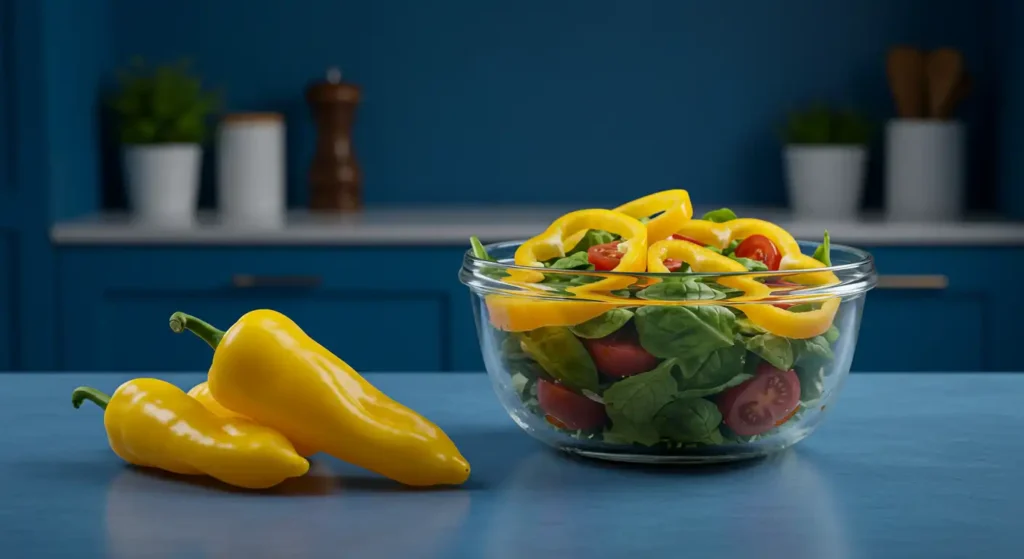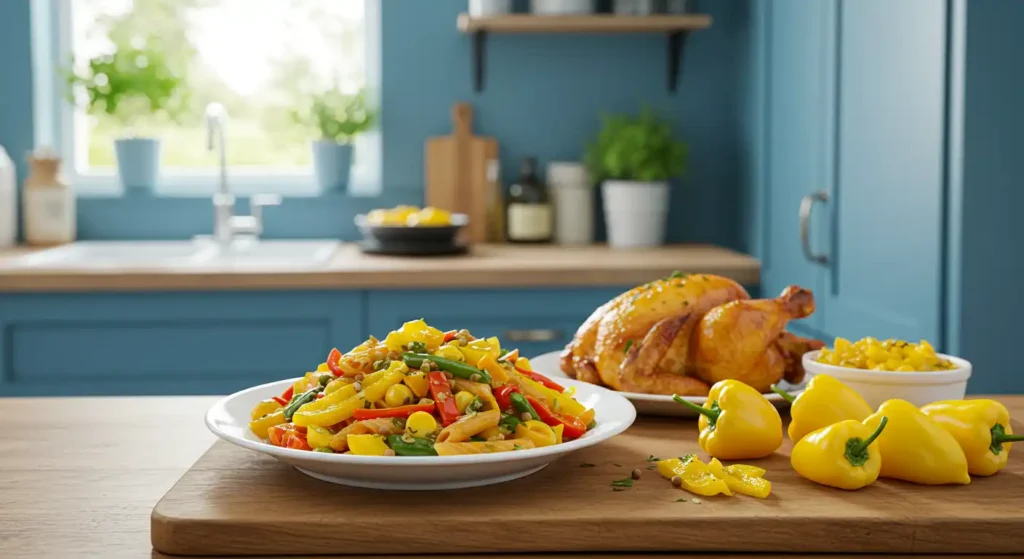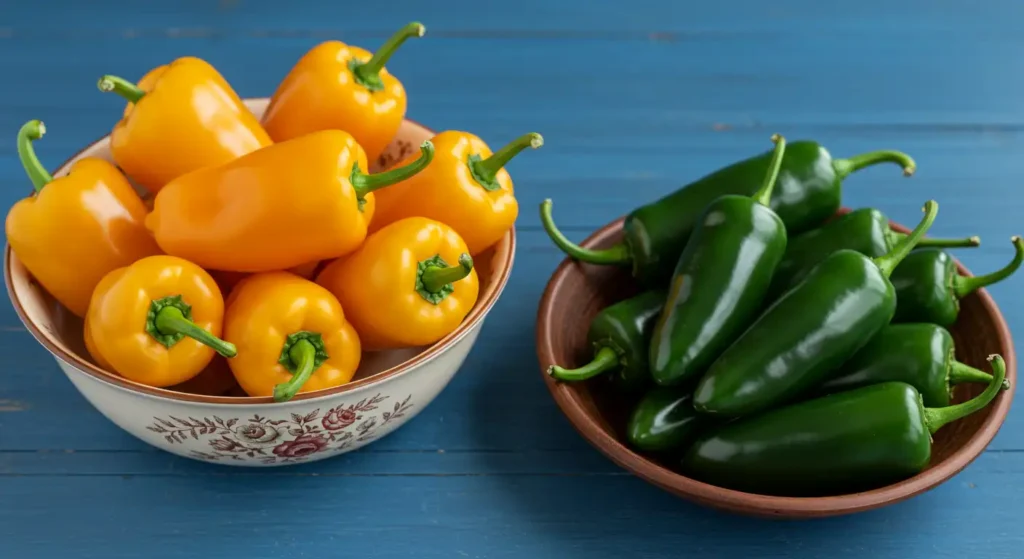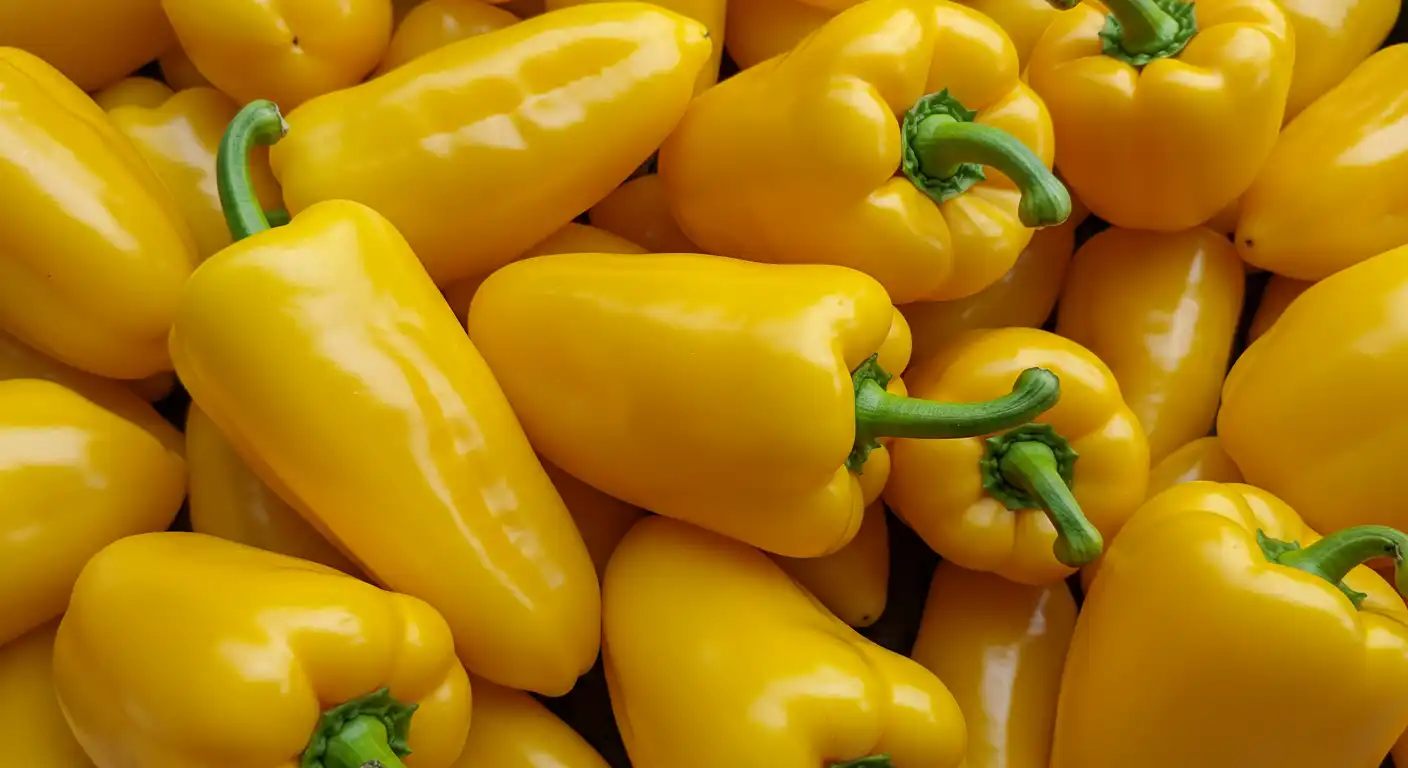Introduction to Banana Peppers
When it comes to versatile, flavorful, and nutritious vegetables, banana peppers are a culinary gem. These mildly sweet and tangy peppers add vibrancy to any dish while packing a nutritional punch. They’re loved for their unique flavor profile and ease of use, whether in fresh salads or hearty cooked meals. From amateur cooks to seasoned chefs, banana peppers continue to captivate kitchens worldwide. With their distinct color and mild taste, they offer endless possibilities for creativity in the kitchen. Let’s explore their uses, benefits, and how they compare to other popular peppers.
A Pepper for Everyone
No matter your taste preference, there’s a way to enjoy banana peppers. Their mild flavor makes them appealing to those who shy away from spicy foods while still providing a satisfying zing. Plus, their vibrant yellow color adds a delightful pop of brightness to any dish, turning even the simplest meal into a feast for the eyes and palate. Whether raw, pickled, or cooked, banana peppers adapt seamlessly to diverse cuisines.
What Are Banana Peppers?
Banana peppers are elongated, yellowish-green peppers named for their striking resemblance to bananas. Despite their appearance, they’re not sweet like fruit. Instead, they offer a subtle tang with a hint of mild heat. These peppers thrive in warm climates and can be found in many regions around the globe, making them a favorite for both gardeners and chefs.
Key Characteristics:
- Length: 2 to 6 inches
- Color: Yellow to green, turning red when fully ripe
- Flavor: Mild, tangy, and slightly sweet
Fun Fact:
Banana peppers are often confused with pepperoncini. While they look similar, banana peppers are milder and sweeter. This makes them a popular choice for pickling and topping sandwiches, where their delicate balance of flavors shines.
Growing Popularity:
With their adaptability, banana peppers have become a staple in gardens and grocery stores. They’re easy to grow and yield an abundant harvest, making them a favorite for home gardeners. Their low-maintenance nature and versatility ensure they remain in high demand across culinary circles. Additionally, their colorful appearance makes them a delightful addition to home gardens, often grown alongside tomatoes and herbs.
Nutritional Benefits

Not only are banana peppers delicious, but they’re also packed with essential nutrients that promote overall well-being. Adding them to your diet is an easy way to enjoy a natural boost of vitamins and minerals.
| Nutrient | Amount (per 100g) | Daily Value (%) |
|---|---|---|
| Calories | 27 | 1% |
| Vitamin C | 183 mg | 203% |
| Vitamin A | 200 IU | 4% |
| Fiber | 1.7 g | 7% |
| Potassium | 210 mg | 6% |
| Iron | 0.4 mg | 2% |
Health Benefits:
- Boosts immunity: High in Vitamin C, they strengthen the immune system and help ward off colds.
- Supports heart health: Rich in potassium, they help regulate blood pressure and support cardiovascular function.
- Aids digestion: Dietary fiber promotes gut health and prevents constipation.
- Antioxidant properties: Their vibrant color indicates a wealth of antioxidants, which help fight free radicals.
- Enhances skin health: Vitamin C aids in collagen production, giving skin a natural glow.
- Supports metabolism: Low calorie content and fiber make them a great addition to weight management plans.
Did You Know?
Including it in your diet can also support eye health due to their content of Vitamin A and lutein. These nutrients work together to reduce the risk of age-related macular degeneration. Plus, their potassium content can alleviate muscle cramps, making them a favorite among athletes.
Culinary Uses of Banana Peppers
Banana peppers are incredibly versatile, finding their way into countless dishes. Whether fresh, pickled, or roasted, they add a zesty touch that enhances flavors and appeals to a wide variety of palates.

Popular Uses:
- Toppings: Sprinkle on pizzas, sandwiches, or tacos for a tangy kick.
- Stuffed: Fill with cheese, meat, or rice and bake for a hearty appetizer.
- Pickled: A staple in salads, burgers, and charcuterie boards.
- Sautéed: Toss with olive oil, garlic, and herbs for a quick side dish.
- Raw: Slice them into salads for a crunchy, refreshing addition.
- Grilled: Add to skewers with other vegetables for a smoky, charred flavor.
- Dips: Blend roasted it with yogurt or cream cheese for a tangy dip.
Unique Recipe Idea:
Stuffed Banana Peppers with Quinoa and Veggies
- Hollow out the peppers.
- Mix cooked quinoa, diced tomatoes, chopped spinach, and shredded cheese.
- Stuff the mixture into the peppers.
- Bake at 375°F for 25 minutes. Serve warm for a healthy meal!
Pairing Tips:
Combine it with Mediterranean ingredients like olives, feta, and oregano for a bold, flavorful dish. They also pair well with proteins like grilled chicken, shrimp, or tofu. Their mild tang complements creamy sauces and dips, enhancing dishes like pasta salads and grain bowls.
Joke Break:
Why did the banana pepper bring a ladder to the garden?
It wanted to reach new heights in flavor! (And maybe grab that hard-to-reach seasoning jar.)
Delicious Recipe Ideas
Banana Pepper and Cheese Quesadilla
- Heat a skillet over medium heat.
- Place a tortilla on the skillet and sprinkle shredded cheddar and mozzarella cheese.
- Add thinly sliced banana peppers and diced onions.
- Fold the tortilla in half and cook until the cheese melts and the tortilla is golden brown.
- Serve with salsa and sour cream for a tangy treat.
Banana Pepper and Avocado Salad
- Combine fresh spinach, diced avocado, and sliced banana peppers in a large bowl.
- Drizzle with olive oil and balsamic vinegar.
- Sprinkle with crumbled feta cheese and toasted sunflower seeds for a crunch.
- Toss lightly and serve as a refreshing side dish.
Spicy Banana Pepper Stir-Fry
- Heat sesame oil in a wok over high heat.
- Add chopped garlic, ginger, and sliced banana peppers.
- Stir in vegetables like broccoli, carrots, and snap peas.
- Toss with soy sauce, a dash of honey, and red pepper flakes for a sweet and spicy glaze.
- Serve hot with steamed rice or noodles.
How Do Banana Peppers Compare to Jalapeños?
While banana peppers and jalapeños are often compared, they cater to different taste buds and culinary needs. Each brings its unique flair to dishes, ensuring that there’s a pepper for everyone.

| Feature | Banana Peppers | Jalapeños |
| Heat Level | 0–500 SHU | 2,500–8,000 SHU |
| Flavor Profile | Mild and tangy | Spicy and earthy |
| Color | Yellow to green | Green to red |
| Culinary Uses | Versatile | Bold, spicy dishes |
Why Choose One Over the Other?
For those who love experimenting in the kitchen, both peppers have their place. Use it for mild, tangy dishes and jalapeños for bold, spicy recipes. A combination of the two in recipes like salsas or stir-fries creates a harmonious blend of sweet and spicy flavors. Their contrasting heat levels allow for creative culinary adventures that cater to diverse preferences.
1. Growing and Harvesting Banana Peppers
Expand on how to grow it at home, including tips on soil type, sunlight needs, watering schedules, and common pests to watch out for. Include advice on when and how to harvest them for the best flavor and texture.
2. Creative Banana Pepper Recipes
Include innovative recipes beyond traditional uses, like banana pepper salsa, spicy banana pepper hummus, or banana pepper-infused oils. Highlight their versatility in desserts or beverages for an unexpected twist.
3. Cultural and Historical Insights
Delve into the history of it, their origins, and their significance in different cuisines around the world. Discuss how they became a staple in American kitchens and their global popularity.
Growing and Harvesting Banana Peppers
Expand this section with tips for growing it in your garden or containers. Highlight their preferences for warm weather, well-drained soil, and consistent watering. Explain the stages of ripeness, from green to red, and how each stage impacts their flavor. Offer advice on how to handle common pests like aphids and diseases like blossom-end rot. Share tips on proper harvesting methods to avoid damaging the plant and ensure continuous production.
Banana Peppers in Global Cuisines
Explore how banana peppers are used in various international dishes. Highlight their popularity in Mediterranean recipes like Greek salads and mezze platters. Discuss their role in Italian antipasto, Indian chutneys, and Tex-Mex staples like fajitas. Include a spotlight on how different cultures pickle or preserve banana peppers and how these techniques influence their flavor and texture. Provide examples of famous dishes featuring banana peppers from around the world.
Innovative Ways to Use Banana Peppers
Go beyond traditional recipes and delve into creative culinary applications. Suggest using them in unexpected ways, such as blending into smoothies for a tangy kick, adding them to fruit salsas, or infusing their flavor into oils and vinegars for salad dressings. Offer ideas for dehydrating it to make homemade chili flakes or powder. Include ways to incorporate them into sweet dishes, like jams or spicy fruit preserves, for adventurous food lovers.
Frequently Asked Questions
Are Banana Peppers Hot or Sweet?
Banana peppers are primarily sweet but can have a very mild heat, making them ideal for a variety of dishes.
Are Banana Peppers Healthy to Eat?
Yes! Packed with vitamins, fiber, and antioxidants, it support immunity, digestion, and heart health.
Are Banana Peppers Like Jalapeños?
No, banana peppers are milder and sweeter compared to the bold heat of jalapeños.
Conclusion:
In conclusion, banana peppers are a delicious, nutritious, and versatile ingredient suitable for every palate. Whether you enjoy them fresh, pickled, or roasted, their mild flavor and health benefits make them a must-have in any recipe repertoire. Their adaptability and nutritional value ensure they can elevate any meal, from simple snacks to gourmet creations. Don’t hesitate to experiment with this fantastic ingredient and explore new culinary heights! Whether in savory recipes or as a snack, banana peppers promise to brighten your meals and your day.
